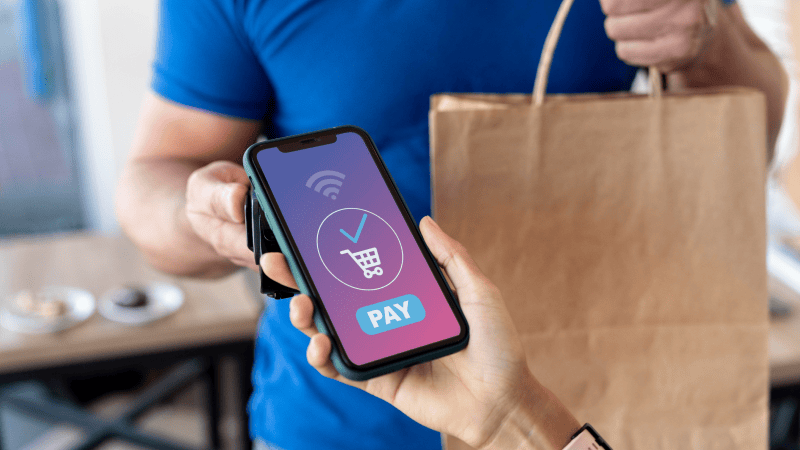Maximizing “Delivery App” Success: How Crowdtesting Can Help with Crucial Testing Processes

The modern era prizes convenience, epitomized by the ascent of delivery apps. In 2027, the global food delivery market is expected to hit a staggering $1.65 trillion, showcasing the sector's lucrative allure. Front runners like UberEats, DoorDash, Swiggy, Grubhub, and Deliveroo are spearheading this movement, becoming daily essentials by offering a medley of convenience and choice. In bustling locales, these apps reign supreme; GrubHub in New York City and Boston, DoorDash in Dallas, Houston, Philadelphia, and San Francisco, and Uber Eats in Miami. Yet, success in this domain isn't solely about catchy campaigns or sleek interfaces; it's significantly anchored in rigorous testing. User experience testing is pivotal in app development, serving to enhance usability and user experience, which, in turn, boosts customer satisfaction, usage, and revenue. It ensures compatibility across diverse devices, identifies bugs, and addresses performance glitches, aiding in delivering superior mobile apps that meet and exceed user expectations. A strategic testing plan covering aspects like installation, regression, upgrades, operational and security testing is vital in this fiercely competitive landscape. Quality, functionality, and usability are the cornerstones of an app's appeal and credibility. These pillars are fortified through meticulous testing, ensuring alignment with the intended user experience. As the battle for market share intensifies, investing in robust testing processes isn't just wise; it's crucial. Rigorous testing helps delivery apps refine functionalities, augment user satisfaction, and carve a noteworthy position in this burgeoning market.
What is an On-Demand Delivery App and How Does It Work?

On-demand delivery apps have revolutionized the way consumers access goods and services. Through these apps, users can order products or services, which are then delivered to their doorsteps. The process typically follows these steps:
- Customers place an order for a product or service through the app.
- The app matches the order with the nearest available driver or service provider.
- The driver or service provider accepts the order and picks up the product from the retailer or prepares to provide the requested service.
- The driver delivers the product to the customer's doorstep.
Furthermore, on-demand delivery apps allow customers to decide where they would like their products to be delivered and when they would like the delivery to occur, often within the shortest possible time. This, combined with the ability to track their orders and plan their schedules accordingly, makes on-demand delivery apps highly appealing to modern consumers.
Key Challenges in Delivery App Testing

Testing delivery apps presents a unique set of challenges that must be effectively addressed to ensure the delivery of a high-quality product. Here are some critical challenges involved:
User Interface and Experience Testing
Providing a seamless and intuitive user interface (UI) and a satisfying user experience (UX) is crucial. Any inconsistencies, bugs, or inconvenient designs could deter users from using the app, affecting its overall success.
Compatibility Testing Across Multiple Devices and Platforms
Device and OS Fragmentation
With a global proliferation of devices, testing becomes complex. The app needs to function seamlessly across a multitude of device types, operating systems, and screen sizes.
Different Screen Resolutions
Apps need to be tested across different screen resolutions to ensure consistent UI/UX.
Performance and Load Testing
Varying network conditions can affect an app’s performance. Testing how the app performs under different network conditions is essential.
Security and Data Privacy Concerns
Security testing makes you confident in the safety of user data. It helps you build trust with users.
Order and Payment Processing

Ensuring that the order and payment processing workflows operate flawlessly is essential to prevent transaction issues that could negatively impact user satisfaction and trust.
Multi-Role Testing
Multi-role testing is important in checking how well a delivery app works. In this method, two testers work together, one acting as the driver and the other as the client, to see how the app performs. They check how well orders are accepted, navigated, and delivered from both sides, making sure everything runs smoothly and problems are found before the app is used by real users. This way, developers can fix issues early, making sure the app is ready and reliable for everyone.
Localization and Internationalization Testing
Apps need to be tested for different languages, regions, and cultures to cater to a global audience.
Location Accuracy
Testing location accuracy is crucial for delivery apps as they rely on precise mapping, routing, and ETA (Estimated Time of Arrival) calculations. It helps ensure that drivers take the most efficient routes and customers get accurate delivery times.
Real-Time Tracking
Real-time tracking is a critical feature in delivery apps, and it needs to be tested rigorously to ensure accuracy and timeliness.
Integration with 3rd Party Services
Delivery apps often integrate with third-party services like mapping services, payment gateways, or restaurant websites. Ensuring seamless integration and interaction with these services is crucial for the app’s overall functionality and user satisfaction.
The Role of Crowdtesting in Delivery App Testing

Crowdtesting is a collaborative testing framework where individuals from different locations collectively participate in testing a product, in this case, a delivery app. This mode of testing allows for real-world testing scenarios, which is crucial for location-based and interaction-heavy apps, like delivery apps. With it, you get:
Diverse Testing Environments
Crowdtesting provides a diverse range of real-world testing environments, crucial for delivery apps operating in varied conditions and geographies.
Cost-Effectiveness
It's a cost-effective way to perform extensive testing, not requiring a dedicated in-house team. Localization, Locations, and Languages Localization testing is key for delivery apps aiming to work well in different areas and languages. It checks if the app shows correct information and works well in various places and in different languages, and cultures. This testing helps find and fix issues tied to language or location, making the app more user-friendly worldwide. Also, it allows easier testing across international locations and languages, ensuring the app is ready for a global audience.
Real-World Scenarios
Crowd testers can test the app in real-world scenarios, which are vital for identifying bugs and improving user experience. By role-playing as the driver, client, or app administrator, they can better understand how the app works in different situations.
End-to-End workflows
Testing key integrated workflows end-to-end is more seamless via an engaged crowd
Dedicated Project Manager
A dedicated project manager is assigned to handle the crowdtesting process, ensuring that the testing objectives are met and the process stays on track.
Step-by-step guide for integrating crowdtesting into the testing process:

- Defining Testing Objectives and Requirements: Outline what you aim to achieve with testing. It could be identifying bugs, checking the user interface, or testing the app’s performance under different conditions.
- Creating Test Scenarios and Tasks for Crowdtesters: Design various testing scenarios that crowd testers will execute to evaluate the app’s performance and functionality.
- Selecting a Crowdtesting Provider: Choose a provider based on their experience, tester community, coverage, reporting and communications, a platform for bug reporting, project management capabilities, pricing models, references, and their flexibility and customization options.
- Managing and Communicating with the Project Manager and the Crowdtesters: Maintain open communication channels with the Project Manager and the Crowdtesters to ensure that the testing process is going as planned.
- Collecting and Analyzing Results: After the testing process, collect and analyze the results to identify areas of improvement.
Ubertesters and Delivery App Testing
Ubertesters is a platform known for offering a powerful blend of global testing force and market expertise to attain high standards in mobile app testing. We provide a cloud-based QA management tool specially designed for mobile and web applications' beta testing. This platform aids companies in better managing and monitoring the entire beta testing process while harnessing the power of the crowd. For delivery apps striving to achieve a seamless user experience and robust functionality, engaging with a platform like Ubertesters could be instrumental. By leveraging our extensive testing services, delivery app developers can significantly enhance the quality of their apps, making them resonate well with the end-users and stand out in the highly competitive on-demand delivery market. Furthermore, our crowd-testing approach facilitates end-to-end testing under real-life scenarios. Testers, working in pairs and role-playing as drivers and clients, navigate through actual routes in the target market, thereby experiencing and evaluating the app's functionality in real operational conditions. This hands-on testing method, including actual driving around, provides invaluable insights into how the app performs in the real world, enabling developers to fine-tune the app to meet the practical needs and expectations of the end-users in specific markets.
Conclusion
The surge of on-demand delivery apps has elevated user experience standards, with success hinging on robust testing. Crowdtesting, leveraging a global tester community, addresses this need by simulating real-world conditions, thus unearthing crucial insights for improvement. When well integrated into the development process, this testing paradigm accelerates the testing cycle and ensures a thorough examination of app functionalities. Ubertesters further streamline this approach, embodying an efficient framework for crowdtesting. As the delivery app market grows competitive, adopting innovative testing methods like crowdtesting is imperative for ensuring superior user experiences, meeting escalating consumer expectations, and securing a solid market standing in this digital era. For more information and to schedule a live demo, please contact us at sales@ubertesters.com.

